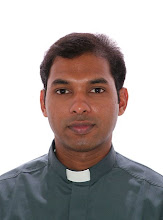 It is accepted fact all over the world that the Indian cinema is the largest in the world in terms of ticket sales and number of productions. Bollywood is the name that is given to the popular Mumbai based film industry in India. The central board of film certification of India cites on its website that every three months an audience as large as India’s billion strong population visits cinema halls. Indian cinemas are popular in various parts of the world, especially in countries with significant Indian communities.
It is accepted fact all over the world that the Indian cinema is the largest in the world in terms of ticket sales and number of productions. Bollywood is the name that is given to the popular Mumbai based film industry in India. The central board of film certification of India cites on its website that every three months an audience as large as India’s billion strong population visits cinema halls. Indian cinemas are popular in various parts of the world, especially in countries with significant Indian communities.Since India is a large country where many languages are spoken, the cinema too are produced in many languages. Even though mainly there are 415 language in India, the Indian film producers have made films in thirty of the largest languages. However the largest language groups support major regional industries in India are Hindi, Malayalam, Tamil, Telugu, Bengali, Marathi, Kannada and Odiya.
The cinema was introduced to India with the Lumiere Brothers’ Cinematography on July 7, 1896. but the first full le
 ngth Indian feature film was Raja Harishchandra made by Dadasaheb Phalke on May 1913.
ngth Indian feature film was Raja Harishchandra made by Dadasaheb Phalke on May 1913.There have been many influences that have shaped the conventions of Indian popular cinema. The first among them is the ancient Indian epics of Mahabharata and Ramayana which have exerted a profound influence on the thought and imagination of Indian cinema. It influenced a lot in its narration, side story, back story and story within the story etc. The other influence was the impact of ancient Sanskrit drama with its highly stylized nature and emphasise on spectacle, where music, dance and gesture combined to create a vibrant artisti
 c unit with dance and mime being central to the dramatic experience.
c unit with dance and mime being central to the dramatic experience.Through the cinemas the film makers always try to exhibit a different aesthetic and political sensibility and were inclined to explore the case and class contradictions of Indian society the nature of oppression suffered by women, the dislocations created by industrialism and migration from rural to urban areas, the problem of landless, the impotency of ordinary democratic and constitutional procedures of redress, and so on.
It is important that anyone who wishes to explore the world of Indian cinema should also reflect on its presence in Indian spaces, its relation to vernacular art forms and mass art, and highly stratified and gendered space of the Indian cinema hall.



